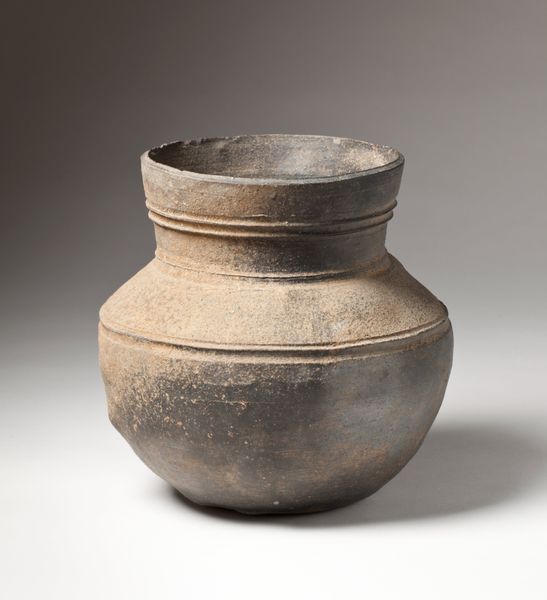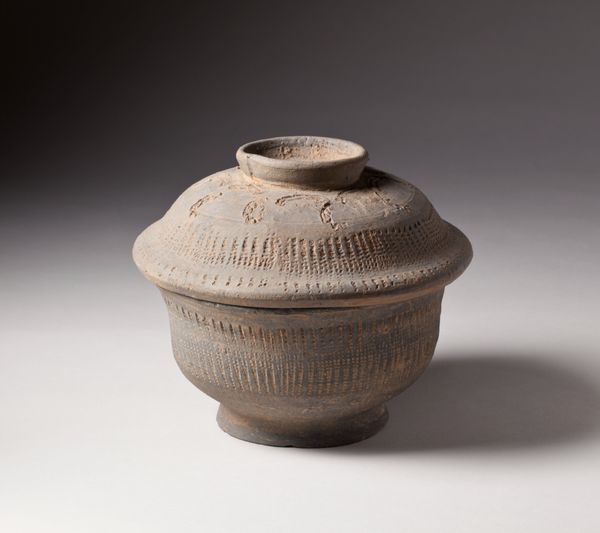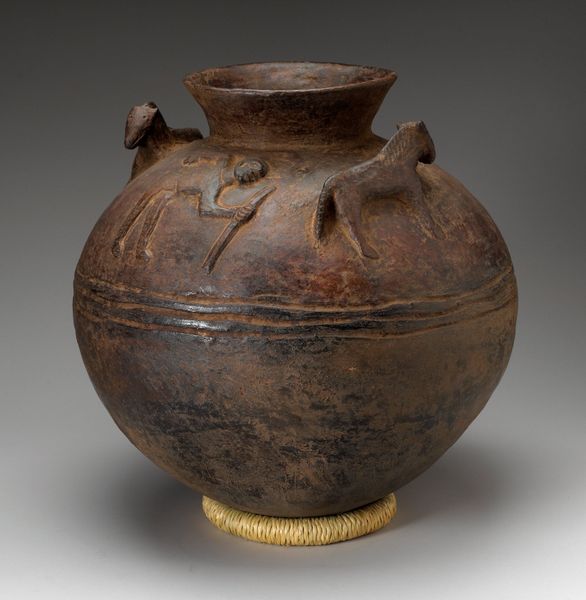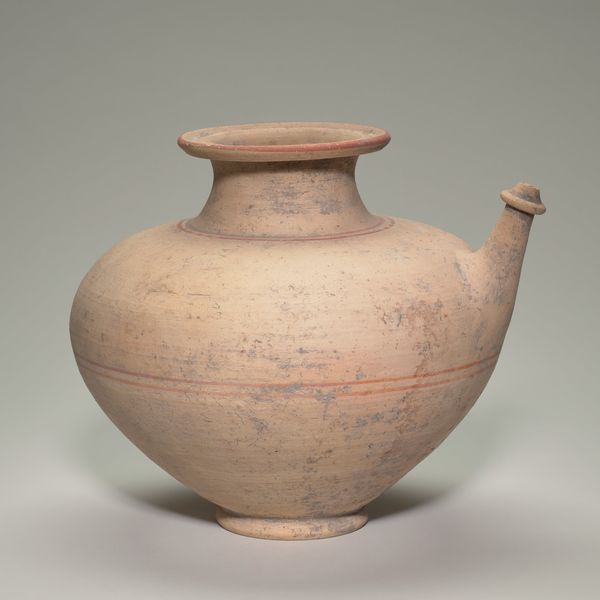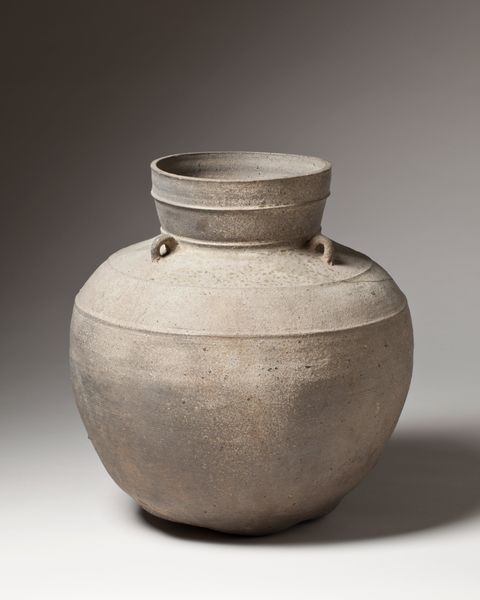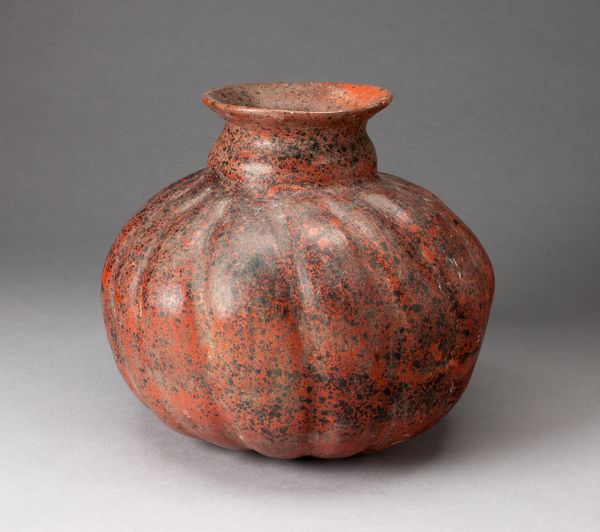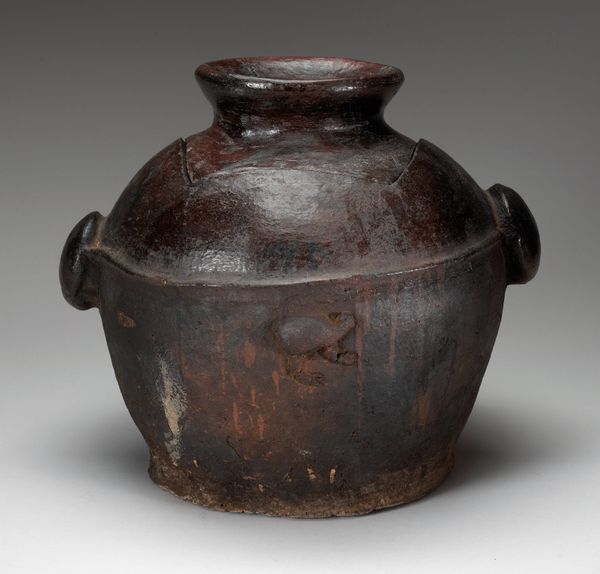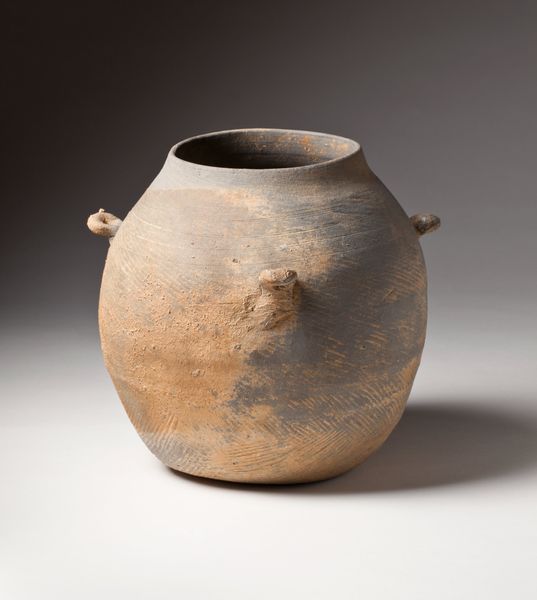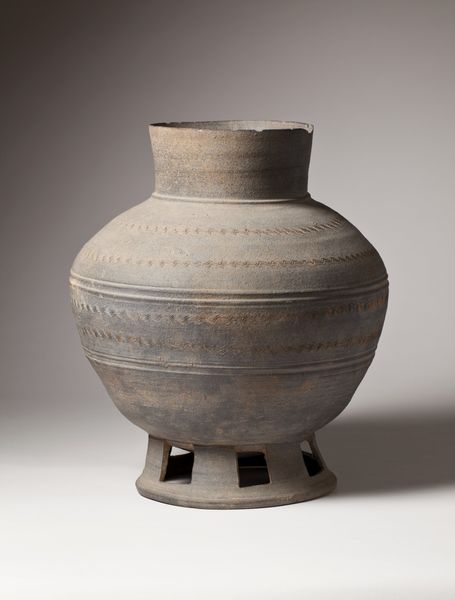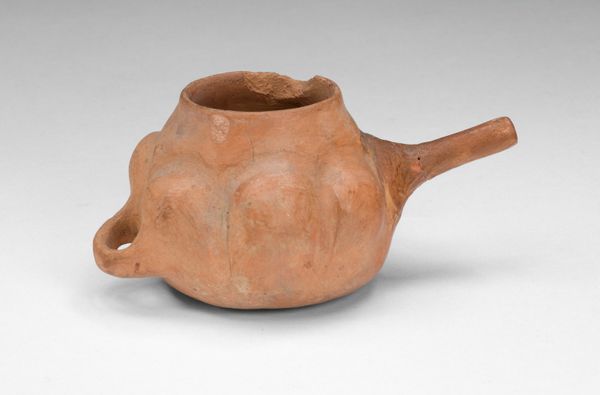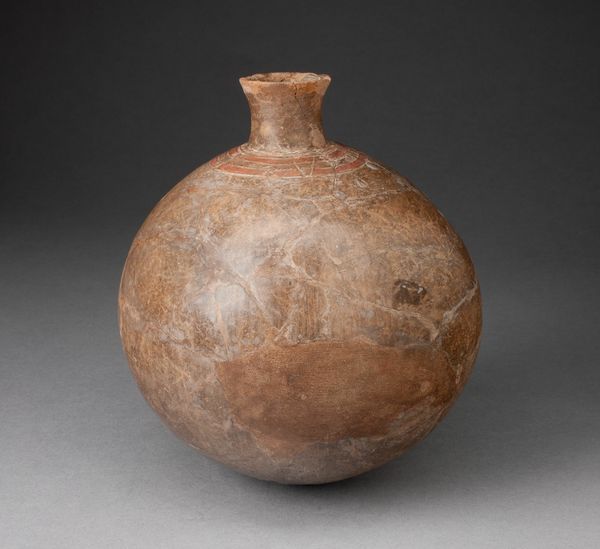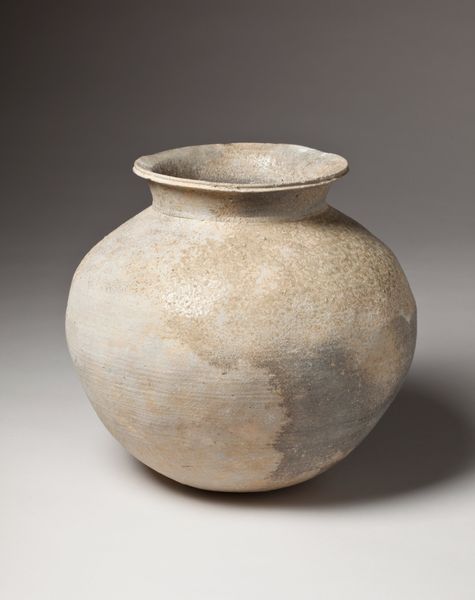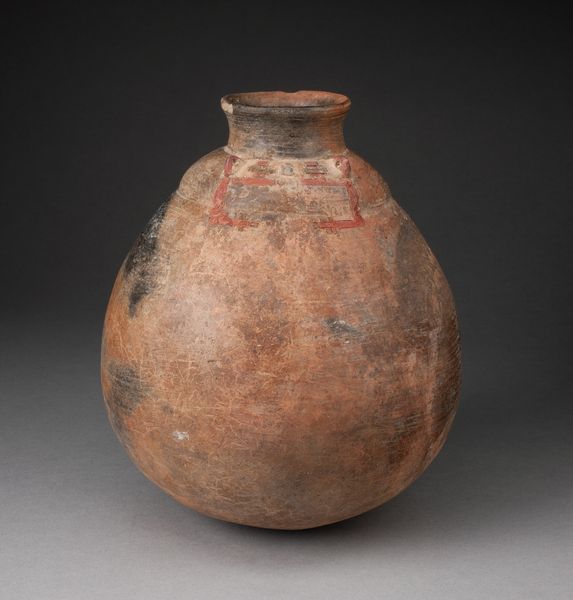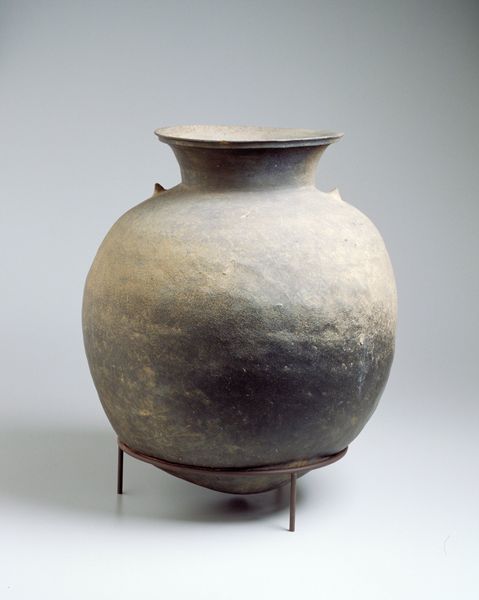
ceramic, earthenware
#
ceramic
#
earthenware
#
ancient-mediterranean
Dimensions: 4 9/16 × 4 7/8 × 3 5/8 in. (11.59 × 12.38 × 9.21 cm)
Copyright: Public Domain
Curator: Standing before us is a small, lidded jar with a handle, believed to be from around the 5th century. It’s part of the Minneapolis Institute of Art’s collection, an ancient piece made of earthenware ceramic by an anonymous artisan. Editor: It's remarkably humble. The unglazed surface and earthy tone project a quiet utility, but the craftsmanship, despite its simplicity, suggests meticulous work. I imagine the hand that shaped it, feeling the coolness of the clay… Curator: Absolutely, and considering the context of its creation, one might consider the cultural implications of such a domestic item. Who did it serve? Were objects like this specific to a gender, class, or role within the ancient world's socio-political sphere? Editor: Indeed. Let's look at the construction—the clay likely came from a nearby source, readily available and perhaps holding specific significance to that location. Shaping it involved physical labor; the marks, though subtle, indicate a direct engagement with the material world, not alienated from it. We have to recognize the means through which the piece exists, as both a made thing but a piece reflecting its location of manufacture, access to materials, even modes of production at the time. Curator: Precisely. Furthermore, could its modest size hint at the economic circumstances of its owner? Was it meant to hold a precious substance, indicative of status or ritual use, that had cultural weight to those within society? We need to reflect on who possessed the ability to procure even modest handcrafted items. Editor: Its functionality extends beyond mere storage. This jar participated in cycles of use and reuse, connected to a network of other handmade objects and individuals involved in the work it may have represented. We should imagine this not simply on display but within that network, acting within its own designed purpose. Curator: It invites us to contemplate not only the daily lives of ancient individuals, but also how societal hierarchies and gendered roles shaped artistic creation and consumption in antiquity. And, of course, access to art, and control of how art operated across identity markers in culture is what has meaning in these artifacts. Editor: Seeing the jar helps me trace those relationships. Its simple presence offers a tactile connection to the labor, land, and social realities from which it emerged. It provides its audience a lens into daily needs and concerns, now so many centuries passed. Curator: Exactly, it also makes me curious about what modern societies place on similar practical domestic objects versus how history considers function to operate in ancient artworks, a powerful question when you start considering these sorts of objects through time.
Comments
minneapolisinstituteofart almost 2 years ago
⋮
Even after the introduction of the climbing kiln in the early fourth century, Korean potters continued to make low-fired earthenware in addition to more durable stoneware.
Join the conversation
Join millions of artists and users on Artera today and experience the ultimate creative platform.
